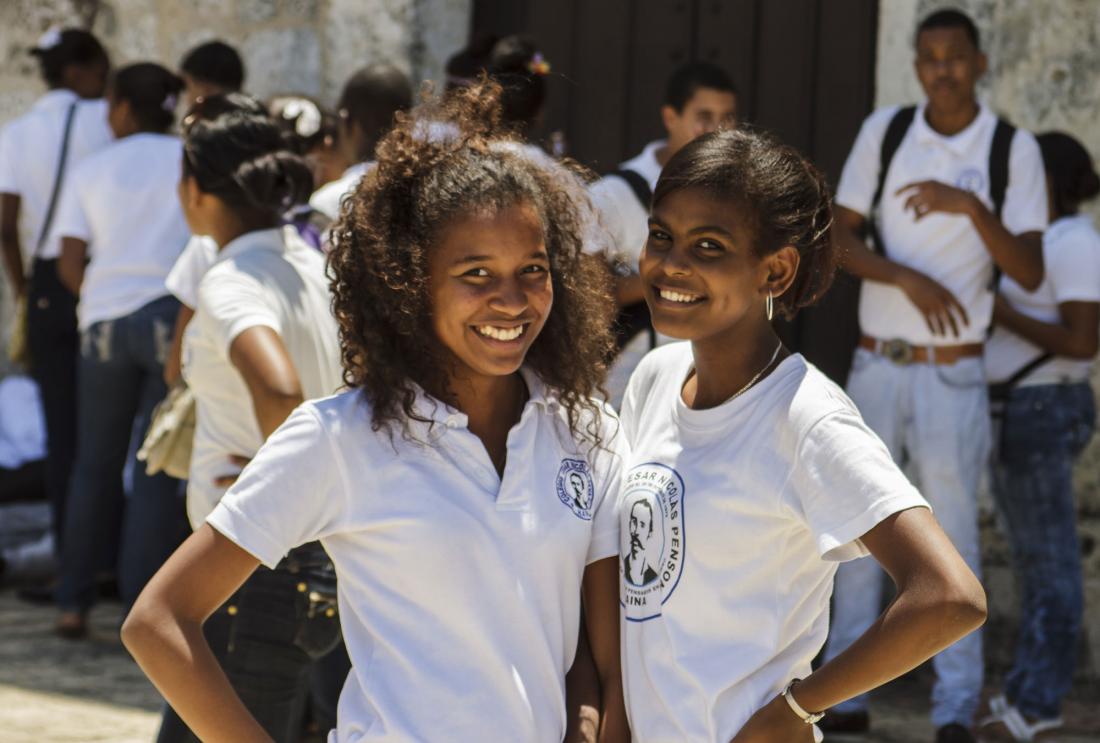Education Mismatch and Motivational Messages
- Students
- Youth
- Dropout and graduation
- Enrollment and attendance
- Information
In the Dominican Republic, dropout is a problem in junior and senior high school even among high-scoring students. The dropout rate is particularly high among girls and students in rural areas. These students may drop out because they are unaware of their academic rank or lack information on the opportunities to fund higher education. Can providing high-performing students with information on their rank on national 8th grade exams and details on scholarship opportunities for higher education reduce dropout between 8th and 12th grade?
Problema de política pública
Despite significant returns to higher education, dropout rates in junior and senior high schools remain high in many countries. Even high-performing students—those who are most likely to be eligible for scholarships and able to pursue higher education—often drop out. One reason for this may be that students are not aware of their academic standing or of scholarship opportunities to make higher education possible. Can providing high-performing students with information on their national rank and scholarship opportunities reduce dropout?
Contexto de la evaluación
In the Dominican Republic, 38 percent of students taking national exams in 8th grade drop out by the next set of high-stakes exams in 12th grade, and high-performing students drop out at similar rates as low-performing students. This is especially true for girls and for students in rural areas, who tend to be poorer. On average, 34 percent of the top quartile of performers on the national 8th grade exams drop out between the 8th grade and 12th grade exams. Many students are unaware of the potential for scholarships: 40 percent of 7th and 8th graders did not know that the government offers scholarships for higher education, and 28 percent did not know that universities offer scholarships. Similarly, top performing students might be unaware of how they fare in comparison to other test takers. This suggests that students may overestimate both the monetary and psychological costs of pursuing higher education.

Detalles de la intervención
Researchers partnered with the Ministry of Education of the Dominican Republic to test whether information on national rank and scholarships can reduce dropout among high-performing students. Researchers designed a series of low-cost, informational letters to be distributed to 8th and 12th grade students who scored in the top 25 percent on the national exams. Letters were sent out to 22,359 8th grade students in 2,646 schools and 15,945 12th grade students in 1,688 schools.Schools with at least one student in the top 25 percent were randomly assigned to one of five groups:
- Salience: Students in the top 25 percent in these schools received a letter congratulating them on their performance, but containing no other information on their ranking.
- Ranking: Students in the top 25 percent in these schools received a letter congratulating them on their exam performance and stating the student’s rank in the national percentile.
- Scholarship information: Students in the top 25 percent in these schools received a letter congratulating them on their exam performance. The letter stated that scholarships are available to students and that better performance may increase the chances of getting a scholarship.
- Ranking and scholarship information: Students in the top 25 percent in these schools received a letter containing both national ranking and scholarship information.
- Comparison group: Students in these schools received no letter.
Researchers are examining impacts on enrollment in subsequent years of education, as well as students’ beliefs regarding their ranking, perceptions of the returns to education, knowledge of scholarships, and future education plans.
Resultados y lecciones de la política pública
Project ongoing, results forthcoming.